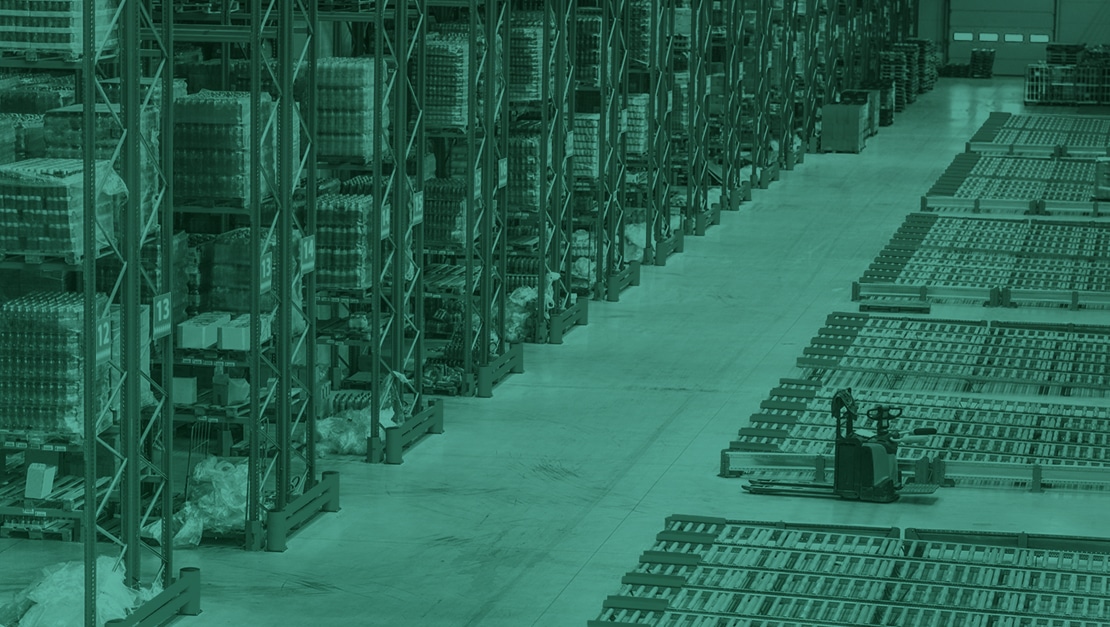Supply chain automation refers to the use of various technologies to handle supply chain tasks that remove the burden of manual and repetitive actions from employees. These automations have the power to transform supply chain management by streamlining processes related to production, distribution, and delivery.
By relying on technologies like robotics, artificial intelligence (AI), and data analytics, businesses can operate at scale and ensure their workflows are both more accurate and reliable. In addition, supply chain automation helps organizations overcome bottlenecks and disruptions that are outside human control, ensuring operations still go ahead.
In this blog post, we’ll delve into the significance of supply chain automation, including different types in use today, its benefits and limitations, a few success stories, and how emerging technologies like aiOla are helping companies navigate complex supply chain challenges.
What Are Some Supply Chain Automation Examples?
An automated supply chain is made up of several different technologies, each with its distinctive role in revolutionizing the logistics ecosystem. To better understand how supply chain and workflow automation work in action, let’s look at a few of the core automation technologies in use today.
Warehouse Automation
Warehouse automation technologies work towards enhancing accuracy, productivity, and efficiency in how items are stored and retrieved. Through the use of cutting-edge technologies, inventory management and order fulfillment can be automated and optimized through systems such as:
- Automated Storage and Retrieval Systems (AS/RS) that use computer-controlled machinery to store and retrieve goods in a warehouse
- Robotics equipped with sensors and AI that are capable of navigating a warehouse and picking and packing items
Transportation Automation
Self-driving vehicles are used in different parts of the supply chain. Some warehouses are large structures that can be time-consuming to navigate for picking orders. Additionally, local deliveries of small packages can be made quicker and less resource-intensive with robotics. Some examples of these technologies include:
- Automated Guided Vehicles (AGVs), which are mobile robots that can move goods in a warehouse autonomously using sensors to navigate
- Drones for last-mile delivery of small packages can help swift delivery of packages and help cut down on drivers on the road
Order Processing Automation
Many parts of order operations can be automated with new technologies and software. These solutions help automate various stages of order fulfillment, helping businesses streamline workflows. Some of these systems include:
- Automated Order Fulfillment Systems that automate tasks related to sorting, packing, and shipping, enhancing accuracy and reducing fulfillment times
- Robotic Process Automation (RPA) involves using software and robots to automate repetitive order-processing tasks, reducing human errors
Benefits of Supply Chain Automation
By 2035, 45% of supply chains are expected to be mostly autonomous, showing how organizations are increasingly relying on automation technology to optimize supply chain processes. There are many advantages to introducing automation to your supply chain. It offers a method for cutting down costs, improving efficiency, reducing errors, and more. Let’s take a closer look at some of the key benefits of supply chain automation:
Improve Efficiency and Accuracy
Minimizing manual intervention on repetitive tasks enables employees to focus their time and skills on other more creative and strategy-based tasks. Automations can reduce processing time, helping operations run more smoothly overall. In addition, when using automation for manual tasks, there are far fewer opportunities for errors related to inventory management, data entry, or even order fulfillment.
Reduce Costs and Resources
Automation reduces the cost of labor related to manual and repetitive tasks, helping businesses reallocate essential human resources to more valuable activities. Not only that, but other resources such as warehouse equipment and even storage space can be optimized through intelligent automation systems. A survey by Deloitte found that 79% of organizations with efficient supply chains saw above-average revenue growth.
Enhance Visibility and Traceability
Transparency is essential to a strong supply chain, and automation systems make it easier to gain real-time visibility into all stages of a supply chain. A survey by McKinsey found that 45% of respondents have no visibility into their upstream supply chain. With automation systems, businesses can better monitor operations and identify bottlenecks or potential risks before they arise. Through automating the tracking and movement of items through a supply chain, traceability is also increased, making it easier to track them down in the event of a recall or even quality control.
Faster Response to Market Changes
Supply chain automation offers businesses an agility they wouldn’t otherwise have, which equips them to respond to fluctuating market demands as needed. Through automating the gathering and analyzing of data in supply chain operations, organizations can make informed decisions based on real-time data to adjust production and distribution strategies. This helps companies stay ahead of the competition and quickly capitalize on market changes as they emerge.
Challenges and Limitations of Supply Chain Automation
While supply chain automation can be truly transformative for many businesses, it’s not without its challenges and limitations. Not all automation tools are going to be a good fit for every business, and it stands to reason that the larger your operation, the more complex it will be to implement automation in the supply chain. Before implementing a new supply chain automation system, here are a few considerations to take into account:
- The investment can be high, as well as ongoing costs for maintenance of certain automation solutions. Before adopting new supply chain automation solutions, conduct an ROI analysis to see what’s worth it for your business
- Your legacy systems may not support more modern supply chain automation tools, so before purchasing new software or tools, make sure you’ve considered how it will fit into your existing system
- New automation systems require training and upskilling for your workforce, which can be both time-consuming and expensive. Consider opting for automation solutions that aren’t as disruptive and don’t have a steep learning curve
- When it comes to automating the gathering and analysis of data, cybersecurity remains a top concern. According to a BCI survey, 55% of businesses believe cybersecurity is the main concern for supply chain resilience. To contend with this, organizations need to implement robust encryption, authentication, and digital security measures to protect sensitive data, which can incur additional costs and resources
- Supply chain automation helps companies become more efficient, but it’s a limited solution that can’t replace your existing workflows or employees. For it to be effective, these solutions need to work in conjunction with your procedures and workforce to best maximize your investment
Case Studies: Successful Implementations of Supply Chain Automation
Many recognizable companies rely on supply chain automation to move and sort items in their warehouses, ranging from different industries like delivery services to retail organizations. To highlight how these automation tools can work in the real world, let’s look at some case studies of companies that have successfully implemented supply chain automation systems.
Amazon’s Robotic Automation Warehouse
To keep up with the demand of a massive volume of orders to be delivered locally and globally at quick speeds, Amazon has implemented 750,000 robots at more than 300 of its warehouses to work alongside humans. These robots pick products from storage and help sort them for packing and delivery, automating a lot of the manual tasks human employees used to do. Amazon implemented these robots to automate repetitive tasks, a move that the company says will also help curb injury rates and turnover in its warehouses.
UPS Automation Solutions
UPS turned to automation and robotics to handle repetitive and labor-intensive tasks, like sorting small packages and unloading trailers. In 2023, 57% of UPS package volume in the U.S. was first processed through automated facilities, making employees’ jobs easier and safer. Together with AI and machine learning, UPS hopes to move more volume from non-automated hubs to automated ones to further reduce manual tasks.
aiOla: Powering Supply Chain Automation With Your Voice
aiOla’s AI-powered speech platform helps organizations automate their supply chain using just the power of their voice. Through the convergence of technologies like automatic speech recognition (ASR) and natural language understanding (NLU), aiOla can gather data through speech and turn that into action.
With aiOla, logistics and warehouse teams can optimize their supply chain by automating manual tasks, like inspections and order processing, simply by speaking normally. aiOla understands over 100 languages as well as different accents, dialects, industry jargon, and acoustic environment. The platform helps companies cut down on time spent on manual and repetitive tasks while making work safer for employees by remaining completely hands-free.
Through capturing and analyzing voice data to inform better business decisions, aiOla helps teams increase productivity through seamless collaboration between man and machine, while simultaneously reducing errors related to manual data entry. Since the platform is voice-based, there’s also little to no learning curve, meaning the system won’t disrupt existing workflows and AI adoption won’t require drastic employee training.
Forming the Future of Supply Chain Automation
Supply chain automation solutions have come a long way, and still have ways to go in terms of evolution and improvement. In the future, we’ll likely see existing technologies like AI, robotics, and the Internet of Things (IoT) progress even further to provide deeper predictive analytics and reinvent supply chain management trends.
Whether you’re robotics or other automation platforms for transportation or order processing, systems like aiOla help you tie everything together with real-time insights into workflows so processes are less likely to get interrupted. Additionally, platforms like aiOla that only rely on speech contribute to the overall safety of supply chain processes, allowing employees to remain focused on a task without distraction or using their hands.
Schedule a demo with one of our experts to see how aiOla can help you automate your supply chain.
FAQ








